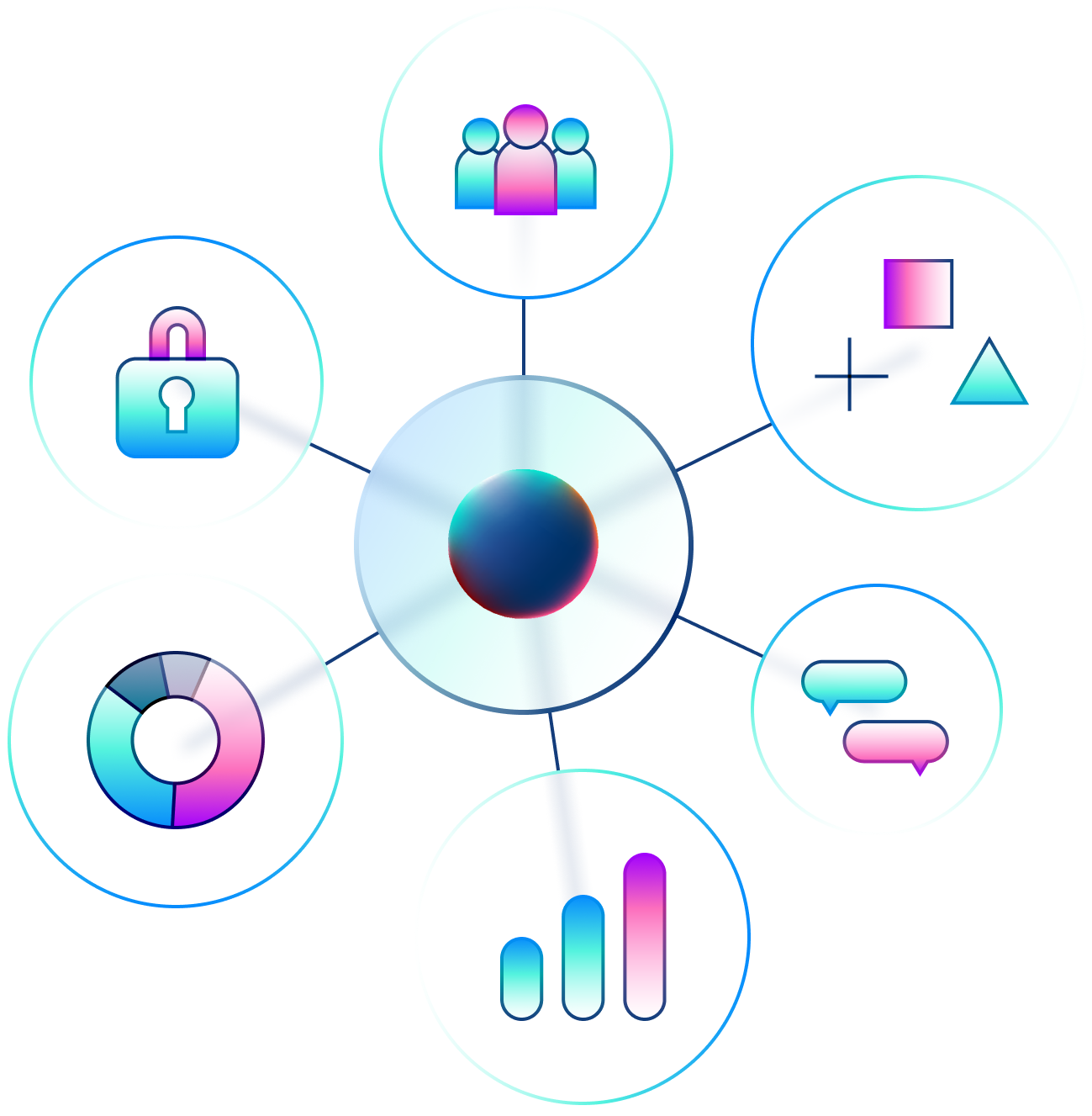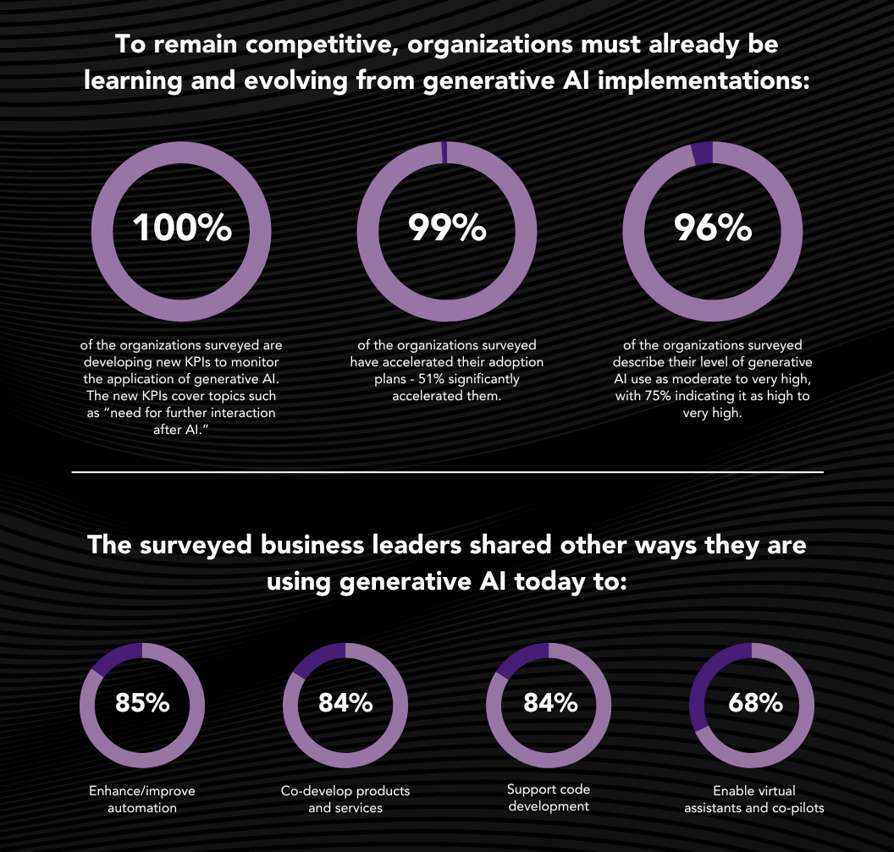Unlock the value of your enterprise data.
A fully managed generative AI platform.
Make the most of your data. Automate your way to ROI.
C1 Elly is the only fully managed generative AI platform that safely activates the full potential of your enterprise data to accelerate your time-to-automation impact.
We deliver everything from data readiness to continuous improvement, crafting safe AI solutions built to enhance both customer and employee experiences that drive real value for your business.
Accelerate your AI journey with a free analysis to uncover impactful automation opportunities.
BENEFITS

Activate your data’s full potential.
Streamlined data access and meticulous curation build a foundation for a robust and clean data architecture.

Secure AI, trustworthy answers.
Guardrails safeguard your data against hallucinations to ensure reliable and precise answers every time.

Continuous innovation managed by experts.
AI experts maximize your return on investment through deployment, ongoing optimization, and oversight.
Data Readiness
Streamlined data access and meticulous curation build a foundation for a robust and clean data architecture.

Seamless connection to any data source (cloud, warehouse, on-premises, proprietary) with 200+ pre-built connectors. Your data becomes accessible and ready for AI.
Learn More
We build a clean and accurate foundation through data curation, pre-processing, and governance so you have a robust and trusted knowledge base for your AI model.
Safety
Guardrails refine your data to reduce the effects of hallucinations and ensure more reliable and precise answers.
Trust by design.
The Human Experience Quality Index ensures reliable AI interactions through a confidence score. If a response falls below the set threshold, it avoids generating inaccurate answers and notifies experts about data gap. We work with you to establish a specific precision threshold.
Protect your data.
Using retrieval-augmented generation (RAG), semantic search, and fine-tuning, we ensure ironclad data privacy. This advanced approach secures brand and customer information while enabling your AI to deliver precise, relevant, and trustworthy responses.
Ongoing Improvements
AI experts maximize your return on investment through deployment, ongoing optimization, and oversight.

AI specialists fine-tune your data using customized prompts, setting guardrails and integrating brand principles for reliable answers, free from hallucinations or irrelevant information. This keeps your AI focused, on-brand, and aligned with your industry's jargon and voice, reinforcing your brand identity and building trust.
C1 Elly’s AI experts go beyond basic tasks. They analyze your business and identify high-impact use cases that align with your goals.
Together, we build a customized roadmap for implementing AI across your organization, maximizing efficiency and results.
Solutions
Transform your business with generative AI solutions. We automate workflows and empower teams through intelligent assistants and collaborative AI solutions.
Automate
An intelligent virtual assistant for the entire enterprise.
Assist
An AI copilot that bridges the AI to human gap.
Solutions
Transform your business with generative AI solutions. We automate workflows and empower teams through intelligent assistants and collaborative AI solutions.
Automate
An intelligent virtual assistant for the entire enterprise.
Assist
An AI copilot that bridges the AI to human gap.
SECURITY & COMPLIANCE
C1 Elly’s security and compliance qualifications have you covered from consumer privacy to system security.




Frequently Asked Questions
- Data readiness. C1 Elly goes beyond basic connections. We seamlessly integrate with all your data sources, from cloud systems to on-premises databases. Then, our experts meticulously curate and prepare your data, ensuring a clean and robust foundation for your AI models. This translates to faster implementation, fewer headaches, and more reliable results.
- Safety. Guardrails safeguard your data against hallucinations, ensuring reliable and precise answers every time. The Human Experience Quality Index (HXQI) ensures trustworthy AI interactions with a confidence score, avoiding inaccurate answers and notifying experts about data gaps. We also use retrieval-augmented generation (RAG), semantic search, and fine-tuning to ensure ironclad data privacy, securing brand and customer information.
- Dedicated AI expert. Our team of AI specialists don’t just build your models; they become an extension of your team. They continuously monitor and optimize your AI, ensuring it stays aligned with your evolving needs. This dedicated support maximizes your ROI and fuels continuous innovation, allowing you to focus on what matters most – running your business.
Ready to make your automation vision a reality?
Our AI Center of Excellence experts will demonstrate how C1 Elly can power your AI goals.
Resources
C1 Elly Datasheet
Discover C1 Elly, our generative AI platform that integrates and governs your data, ensuring precision and reliability. Tailored to your brand, C1 Elly accelerates your automation impact and unlocks your data's full potential.
C1 Elly Automate Demo
See how our AI-powered virtual assistant improves enterprise operations by offering natural interactions across channels, automating tasks, supporting 127+ languages, and increasing self-service rates while reducing costs.
The Era of AI-Powered Connected Human Experience
Read this C1 Edge white paper to explore how peers in your and other industries are using generative AI to shape the future of their organizations.
Generative AI Impact Infographic
We surveyed 500 leaders to get their insights on the impact the emergence of generative AI is having on their organization. Here’s what they said.




